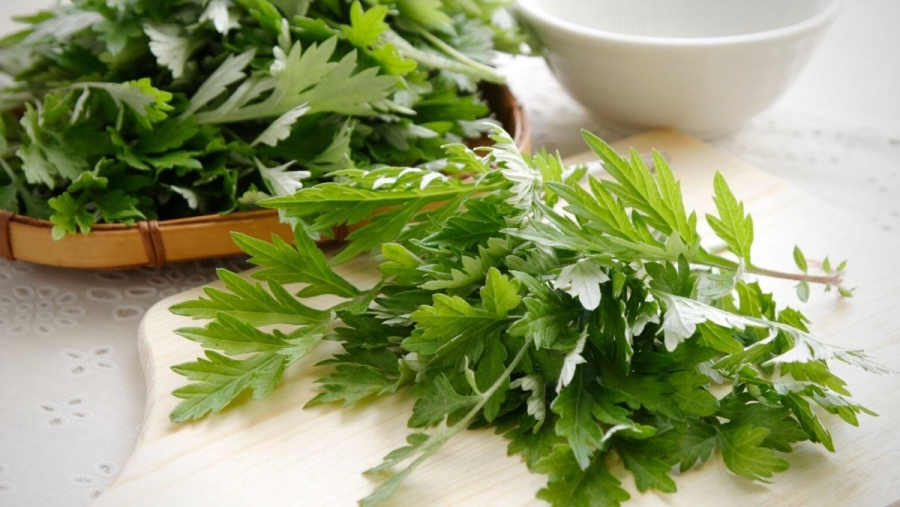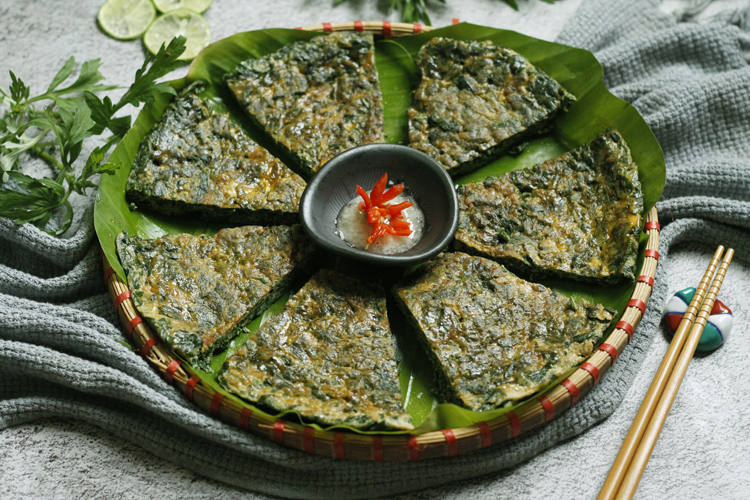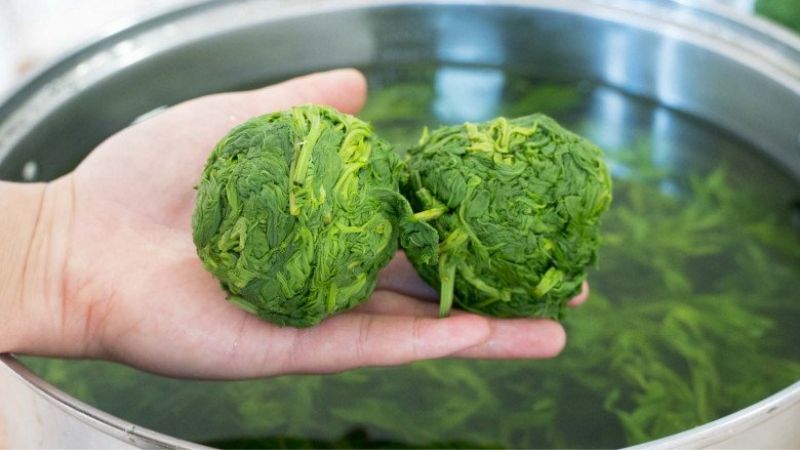Ngải cứu is a relatively easy-to-grow plant that can grow abundantly on the roadside without the need for careful maintenance. This is a type of vegetable that has many health benefits such as promoting liver function, calming the nerves, regulating blood circulation, and regulating menstruation…
Despite its bitter taste, when combined with various other ingredients, ngải cứu can be used to create delicious and nutritious dishes. With this ingredient, you can make tasty dishes such as gà ác tần ngải cứu, óc heo chưng ngải cứu… and the simplest one is trứng rán ngải cứu (ngải cứu omelette). Let’s learn how to make trứng rán ngải cứu with the simple recipe below.

1. How to make trứng rán ngải cứu (ngải cứu omelette)
1.1. Ingredients for trứng rán ngải cứu
– Eggs: 5
– Ngải cứu leaves: 1 handful
– Seasonings: Salt
1.2. Steps to make trứng rán ngải cứu
Step 1: Prepare the ngải cứu leaves
– After buying the ngải cứu leaves, remove the young leaves and wash them thoroughly.
– Next, put an appropriate amount of water in a pot and bring it to a boil. Once the water is boiling, add the ngải cứu leaves and blanch them for about 1 minute.
– Transfer the ngải cứu leaves to a large plate and use a spoon or kitchen utensil to press the leaves to remove the bitter taste.
– Place the ngải cứu leaves on a chopping board and finely chop them.
Step 2: Mix the ngải cứu leaves with the eggs
– Take a large bowl, crack the eggs into the bowl, and whisk them until the yolks are well blended with the whites.
– Then, add the finely chopped ngải cứu leaves to the bowl and mix them together with a little salt to taste. Stir well to dissolve the salt in the egg-ngải cứu mixture.

Step 3: Fry the ngải cứu omelette
– Place a frying pan on the stove, add a suitable amount of cooking oil, and heat it up. When the oil in the pan is hot, pour the egg-ngải cứu mixture into the pan.
– When the omelette starts to solidify, you can use a spatula to flip it and cook until both sides of the ngải cứu omelette are evenly golden.
– Remove the omelette from the pan, finely chop it, and transfer it to a plate.
The ngải cứu omelette, with its vibrant colors combining the yellow of the eggs and the green of the ngải cứu leaves, will be visually appealing. When eating, you will taste the rich and creamy flavor of the eggs and the refreshing taste of ngải cứu. This dish can be enjoyed on its own or with hot rice.
2. Tips for preserving ngải cứu for a year without spoilage
2.1. Ingredients needed
– Ngải cứu leaves
– Baking soda: 5 grams
2.2. Steps to preserve ngải cứu
Step 1: Prepare the ngải cứu leaves
– After buying the ngải cứu leaves, remove the stems and discard any wilted leaves.
– Then, rinse the leaves with water to remove dirt and soil particles, and let them dry in a cool place.
Step 2: Blanch the ngải cứu leaves with baking soda
– Boil a pot of water on the stove. Add 5 grams of baking soda to the boiling water, then add the rinsed ngải cứu leaves and blanch them for 2 minutes. Stir with a spoon and then remove the ngải cứu leaves and place them in a bowl of cold water.
– You may need to change the cold water twice to maintain its color and soak the ngải cứu leaves for about 5 minutes. This helps the leaves retain their vibrant green color.

Step 3: Preserve the ngải cứu leaves
– Remove the ngải cứu leaves from the cold water and squeeze out any excess water. However, there is no need to squeeze them completely dry.
– Place the squeezed leaves in a bag, seal it tightly, and store it in the freezer for later use. When you need to use it for cooking, you can thaw it.









